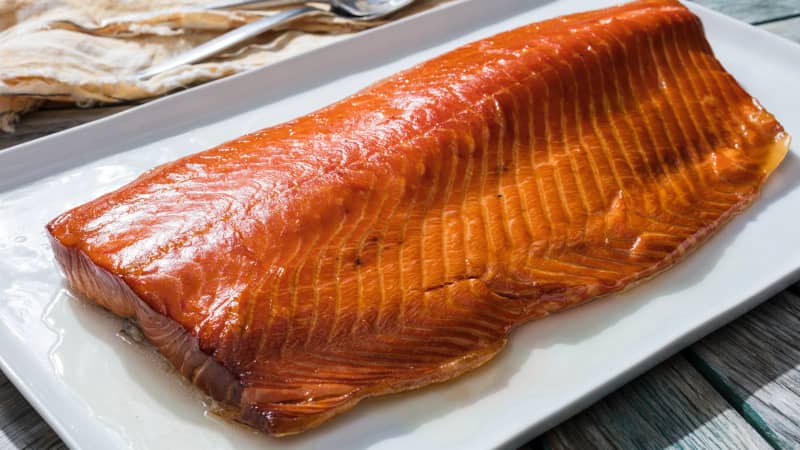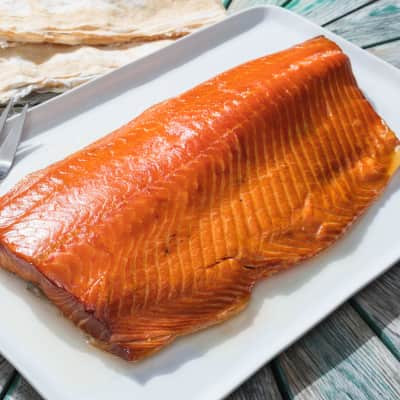I cooked professionally in Scotland from 2000 to 2008, and I still miss the relationships I formed there, with friends, with coworkers, and with hot-smoked salmon. The last one might sound melodramatic, but that fish, produced by a smokehouse on the island of South Uist, was special: silky, tender, and well seasoned inside, with a smoky, lightly sweetened, and delicately chewy exterior providing subtle textural contrast. As the breakfast cook at a posh hotel, I flaked it into softly scrambled eggs. At another restaurant, I stirred it into buttery rice for a dish called kedgeree.
When I came back to the United States, however, my relationship with my favorite fish ended. Hot-smoked salmon is expensive here—about $10 for a 4-ounce vacuum‑sealed piece—and I couldn’t justify the splurge. But recently it occurred to me that if I were to make my own, I’d have few expenses beyond that of the fish. In fact, forget those 4-ounce pieces; I could exploit the economy of scale by buying a full side of salmon for about $40 and then smoke it on my kettle grill. I could either share it, warm from the grill, with a large group, or I could divide it into pieces and squirrel it away in the freezer for future use. A reunion with my treasured old friend seemed imminent.




